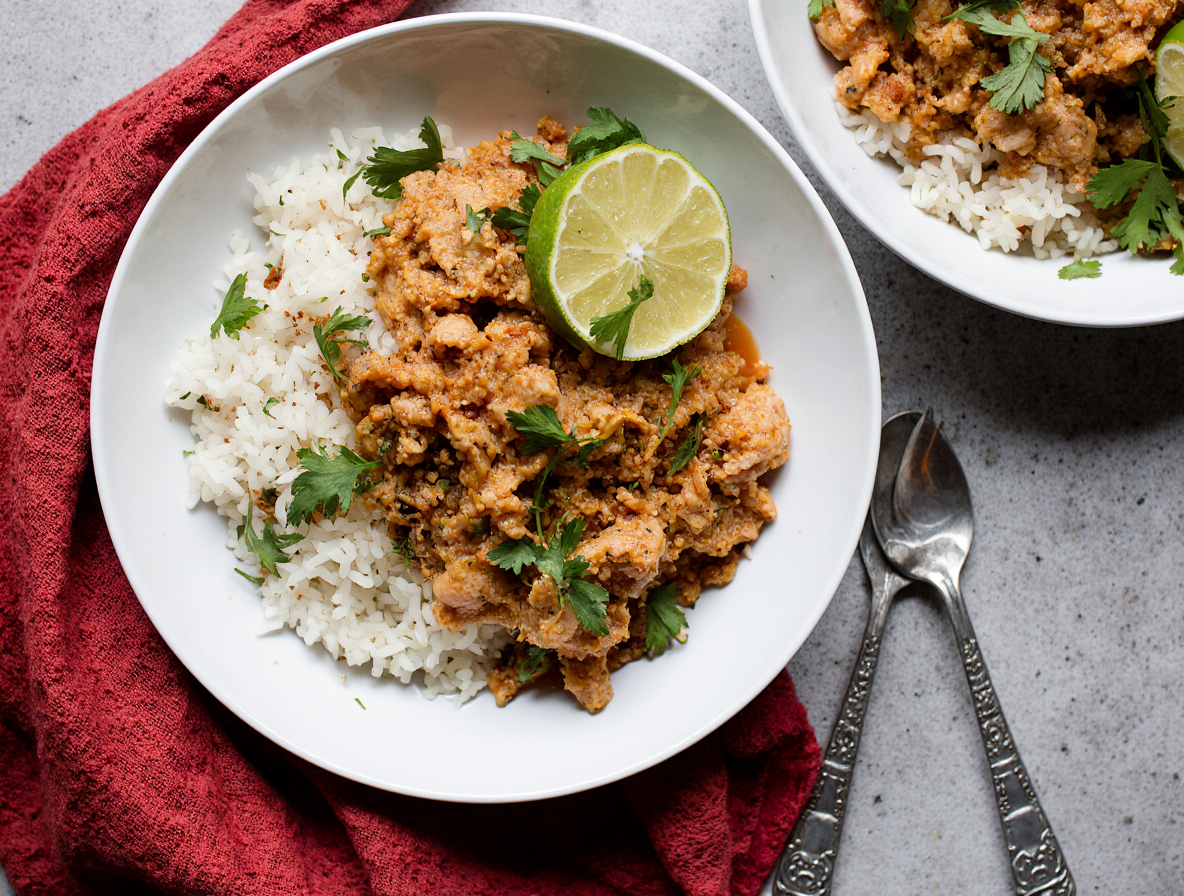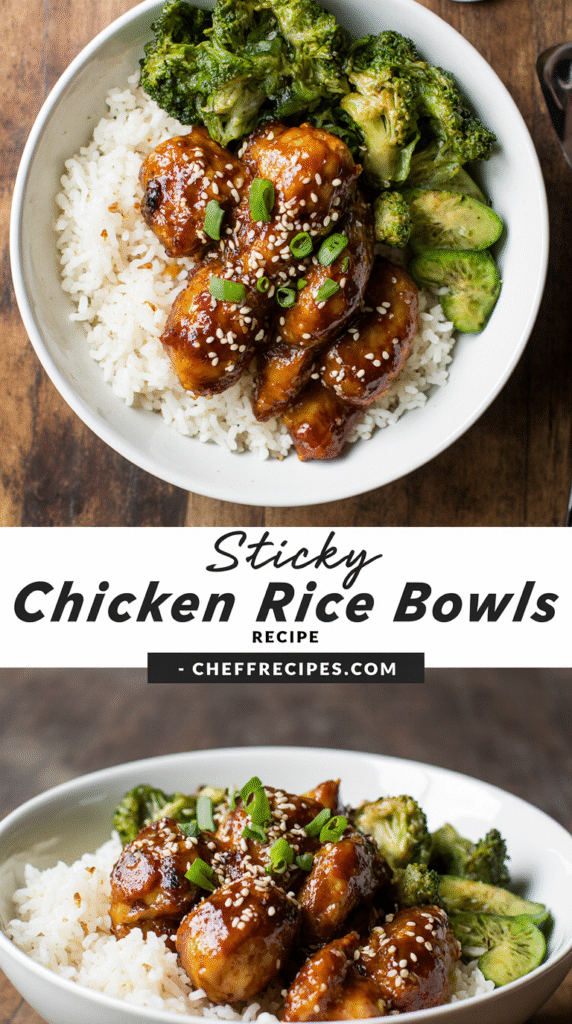How to Make Sticky Chicken Rice Bowls Better Than Your Local Takeout
Sticky chicken rice bowls have become my go-to meal when I want something delicious without the hassle of ordering takeout. This beginner-friendly dish comes together in just 30 minutes total – 15 minutes to prep and 15 minutes to cook. I certainly appreciate how this recipe yields 5 protein-rich servings, making it perfect for feeding the family or meal prepping for the week ahead.
The beauty of chicken rice bowl recipes lies in their simplicity and versatility. This easy sheet pan dinner is especially ideal for beginner cooks because it requires minimal equipment and is hard to mess up. Additionally, this sticky rice and chicken recipe stores well and can be meal-prepped for busy weeks, saving you time and money compared to ordering takeout. In this guide, I’ll show you exactly how to create these flavorful bowls, master the sticky sauce, and customize your creation to suit your taste preferences.
Build the Perfect Sticky Chicken Rice Bowl
The foundation of any great sticky chicken rice bowl starts with choosing the right rice. I prefer jasmine rice for its fluffy texture and slight stickiness that perfectly complements the sauce. Nevertheless, you have several excellent options:
- White rice (jasmine or basmati) for a light, aromatic base
- Brown rice for extra fiber and a nutty flavor
- Sticky rice for an authentic Asian-inspired experience
- Cauliflower rice for a low-carb alternative
Initially, rinse your rice thoroughly under cold water until it runs clear to remove excess starch. This step might seem tedious, but it dramatically improves the final texture. For white rice, use a 1:2 ratio of rice to water, bringing it to a boil before reducing to low heat for 15-20 minutes. Brown rice requires up to 40 minutes, so plan accordingly.
While your rice cooks, prepare your chicken by cutting boneless thighs into bite-sized pieces. Thighs work better than breasts here as they remain juicier and more flavorful. Season generously with garlic powder, onion powder, salt, pepper, and paprika for that takeout-worthy flavor.
For cooking methods, you have options. Air-frying at 400°F for 12-15 minutes yields crispy edges while maintaining juiciness. Alternatively, pan-fry in a tablespoon of oil over medium-high heat for 6-7 minutes per side until golden and reaching an internal temperature of 165°F.
In order to complete your bowl, add steamed vegetables. Steaming actually preserves more nutrients than boiling, making broccoli an excellent choice. Simply steam until bright green and fork-tender but still crisp. Furthermore, consider adding quick-pickled vegetables for acidity or sliced avocado for creaminess.
Once all components are ready, assemble by placing a cup of rice as the base, arranging chicken and vegetables on top, then drizzling with your sticky sauce. For an authentic finishing touch, sprinkle with sesame seeds and sliced green onions before serving.
Master the Sticky Sauce and Spicy Mayo
The secret to turning ordinary rice bowls into crave-worthy meals lies in mastering two essential components: the sticky sauce and spicy mayo. These flavor powerhouses transform simple ingredients into a restaurant-quality sticky chicken rice bowl experience.
Creating the perfect sticky sauce starts with balancing sweet and savory elements. Combine ½ cup soy sauce with ½ cup honey for the foundation of your sauce. Next, add ¼ cup rice vinegar to introduce brightness that cuts through the richness. Minced garlic (3-4 cloves) and a teaspoon of ground ginger provide aromatic depth that makes your sauce taste authentic.
For heat lovers, incorporate 2 tablespoons of sriracha directly into your sticky sauce. However, if you prefer a milder flavor, simply reduce this amount. Moreover, a couple teaspoons of sesame oil introduce a nutty undertone that elevates the entire dish.
The key technique for achieving that perfect sticky consistency involves creating a cornstarch slurry. Mix 2 teaspoons of cornstarch with 2 tablespoons of cold water until smooth, subsequently adding this mixture to your simmering sauce. As a result, your sauce will thicken beautifully within 4-5 minutes of gentle bubbling.
Meanwhile, preparing spicy mayo couldn’t be simpler yet makes a tremendous difference in your sticky rice bowls. Whisk together ½ cup of mayonnaise (Japanese Kewpie mayo works best) with 1-2 tablespoons of sriracha depending on your heat preference. A splash of lime juice brightens the flavors remarkably.
Both sauces store wonderfully in airtight containers—the sticky sauce lasts up to one week refrigerated, whereas spicy mayo remains fresh for about a month. Throughout time, the sticky sauce may thicken further; just add a small amount of water to thin it back to your desired consistency.
Customization is effortless: replace honey with maple syrup for a different sweetness profile or use coconut aminos instead of soy sauce for a gluten-free option. Likewise, adjust sriracha levels in both sauces according to your spice tolerance.
Customize and Store Like a Pro
One of the greatest joys of making your own sticky chicken rice bowls at home is the ability to adapt them to your taste and dietary needs. Not only can you swap proteins, but you can also customize vegetables and grains to create countless variations.
For protein alternatives, flank steak works wonderfully as it marinates well and cooks perfectly over high heat. Tofu makes an excellent vegetarian option—just be sure to select extra-firm varieties for the best texture. Shrimp cooks quickly and absorbs flavors beautifully, while leftover rotisserie chicken saves precious prep time when you’re in a hurry.
Vegetable options are virtually limitless:
- Cucumber and avocado provide refreshing crunch and creaminess
- Cabbage and carrots add color and texture
- Snap peas, edamame, and scallions bring variety
- Cilantro and chopped cashews offer flavor dimension
Looking to reduce carbs? Simply substitute cauliflower rice for traditional rice—it tastes just as good and keeps you equally satisfied. Alternatively, brown rice adds fiber and nutrients with its nutty flavor profile.
Proper storage is essential for meal prep success. Store your sticky chicken rice bowls in airtight containers in the refrigerator for 3-4 days. For best results, keep components separated until ready to eat, particularly sauces which should be stored separately. This prevents soggy vegetables and maintains optimal textures.
First thing to remember about freezing: chicken and rice freeze beautifully for up to three months. Thaw in the refrigerator overnight before reheating. When warming leftovers, cover your bowl with a damp paper towel and microwave for 1-2 minutes to restore moisture.
Essentially, these bowls make excellent leftovers—some components even taste better after the flavors have had time to meld. This makes sticky chicken rice bowls perfect for weekly meal prep, saving both time and money compared to takeout options.
Conclusion
Sticky chicken rice bowls certainly deliver restaurant-quality flavor without the takeout price tag. Throughout this guide, we’ve explored how to create a dish that’s both beginner-friendly and endlessly customizable. The perfect balance comes from properly cooked rice, juicy chicken pieces, and that irresistible sticky sauce that brings everything together.
After trying this recipe, you’ll likely find yourself reaching for these ingredients instead of the delivery app. The beauty of mastering this dish lies not just in the delicious results, but also in the practical benefits. Each component stores well, making these bowls perfect for busy weeknight dinners or meal prep sessions.
Remember, the best sticky chicken rice bowls reflect your personal preferences. Whether you prefer extra spice in your sauce, swap in different proteins, or add unexpected vegetables, this versatile dish adapts to your taste. Experimentation leads to discovering your own signature version that might even surpass your favorite takeout spot.
Therefore, consider this recipe a starting point rather than a rigid set of instructions. Your kitchen becomes the testing ground for creating the perfect sticky chicken rice bowl—one that satisfies cravings while fitting your dietary needs and flavor preferences.
Last but not least, sharing these flavorful creations with family and friends might just earn you a reputation as the takeout-beating home chef. Now, grab those ingredients and get cooking!
FAQs
Q1. How can I customize my sticky chicken rice bowl? You can easily customize your bowl by swapping proteins (try tofu, shrimp, or beef), adding different vegetables like cucumber, avocado, or snap peas, and adjusting the spice level in your sauces. For a low-carb option, substitute cauliflower rice for regular rice.
Q2. What’s the secret to making a great sticky sauce? The key to a perfect sticky sauce is balancing sweet and savory flavors. Combine soy sauce, honey, rice vinegar, minced garlic, and ground ginger. Thicken the sauce with a cornstarch slurry and simmer until it reaches the desired consistency.
Q3. How long can I store my sticky chicken rice bowls? When stored properly in airtight containers in the refrigerator, sticky chicken rice bowls can last for 3-4 days. For best results, keep components separated until ready to eat, especially the sauces.
Q4. What’s the best way to reheat leftover rice bowls? To reheat your sticky chicken rice bowl, cover it with a damp paper towel and microwave for 1-2 minutes. This method helps restore moisture and ensures even heating.
Q5. How can I make my chicken more flavorful in these bowls? Season your chicken generously with garlic powder, onion powder, salt, pepper, and paprika before cooking. For extra flavor, consider marinating the chicken in your favorite blend of herbs and spices. Using chicken thighs instead of breasts can also result in juicier, more flavorful meat.


